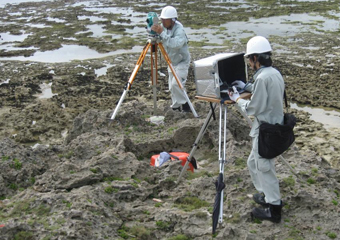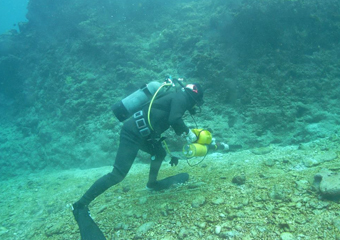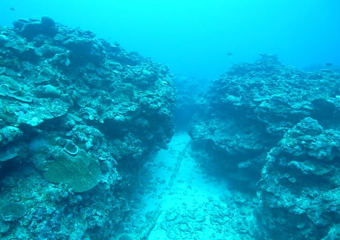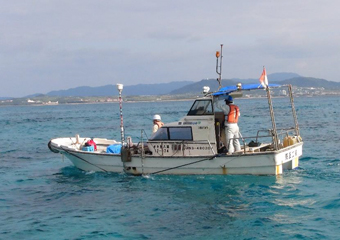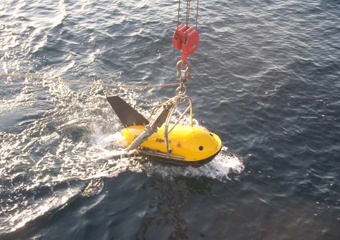High-resolution Seafloor Topology
and Geology
Environmental Research Equipment
High-resolution seafloor research includes deep water topology profiling, wide-area seafloor resource exploration, and submarine cable route design.
The multibeam sonar fit out the bottom of each R/V, the Kaiyo Maru No.1,
No.3 and No.7 provides high-resolution data about the seafloor topology in the depth of 10m to 11,000m for use in various marine projects.
In addition, the echo sounding machine provides hydroacoustic data which is used to identify acoustic anomaly caused by a plume rising from the ocean basin.
The reflected sound pressure can be used to get a simple distribution of bottom sediments.
Data taken by the echo sounding machine may be used to create a bathymetric image,
a bird’s eye view, a reflected sound pressure diagram, acoustic anomaly diagram, seafloor gradient map, etc.
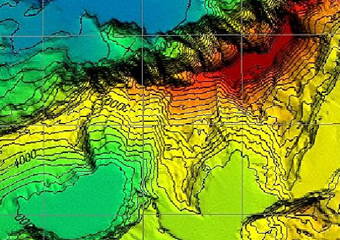
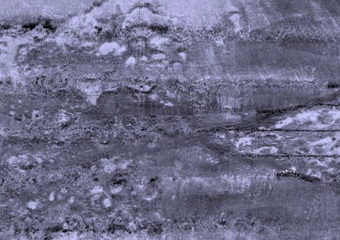
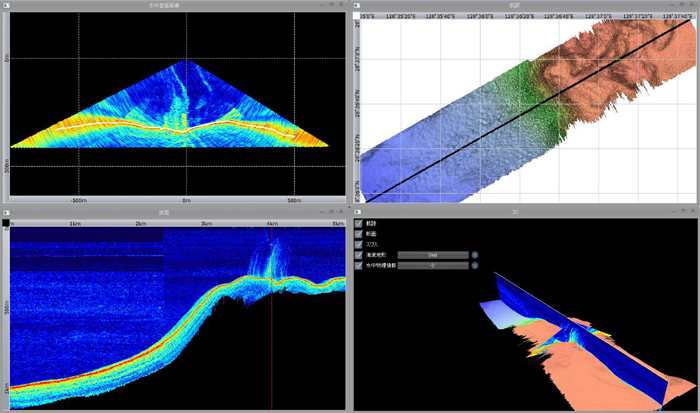
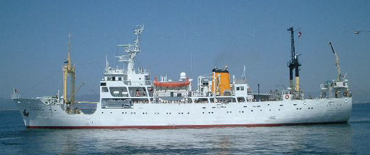
with EM 122 (10~11,000m deep) SBP-120
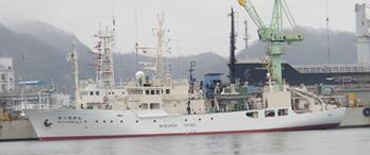
with EM 710MK Ⅱ (10~2,500m deep)
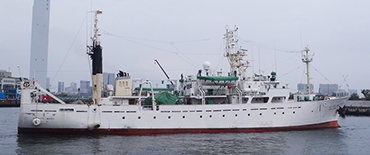
with EM 302 (10~7,000m deep) TOPAS (PS 18)
Geological data are used in wide-area seafloor resource exploration and submarine cable route design.
The sub-bottom profiler (TOPAS PS 18 and SBP 120) at the bottom of each R/V,
the Kaiyo Maru No.1 and No.7 provides sediment structures of some 50m sub-bottom in 11,000m or shallower waters.
The combined side-scan sonar and sub-bottom profiler system (2000-DSS), towed from research vessels,
can be used to create a seafloor image and high-resolution records of geological formation.
Data taken from seafloor geological research are used to create an isopach map, sectional view of surficial sediment, bottom sediment profiling, etc.
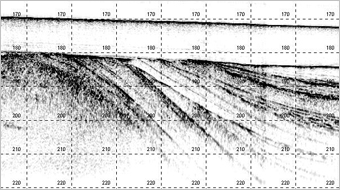
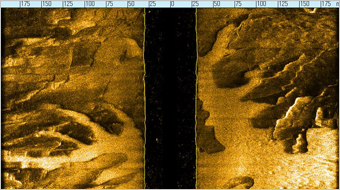
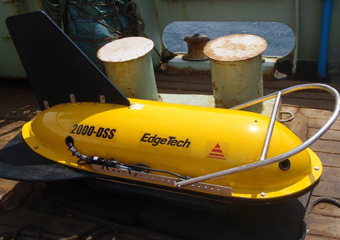
Submarine cable route survey can be conducted in all waters (up to 11000m) in the world. Work starts with submarine cable route planning on DTS (Desk Top Study) using existing documents.
This is followed by land survey to gain topological and other information about the potential land-based station using GPS and total stations.
A submersible survey is conducted next to by divers to gain information about the topology of shallow waters and seabed thickness and commercialization along the planned route.
Video images are also taken to prepare basic data needed for deciding the route.
A marine research is conducted on research vessels with the help of multibeam sonar, sub-bottom profiler,
side-scan sonar and bottom samplers to gain critical data needed for selecting a cable route.
Data analysis is done aboard the vessel and maps are created accordingly as reference material for cable route design.
